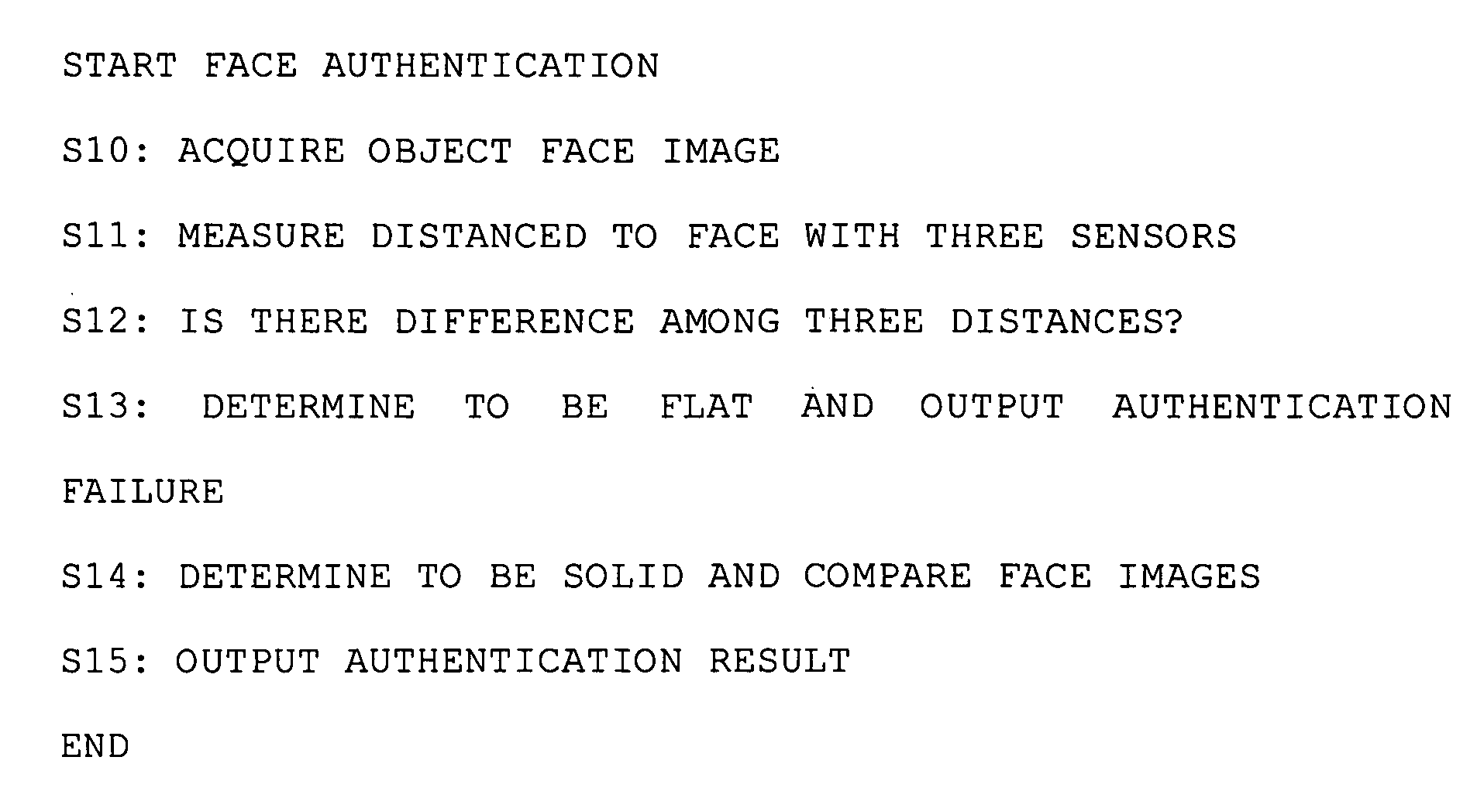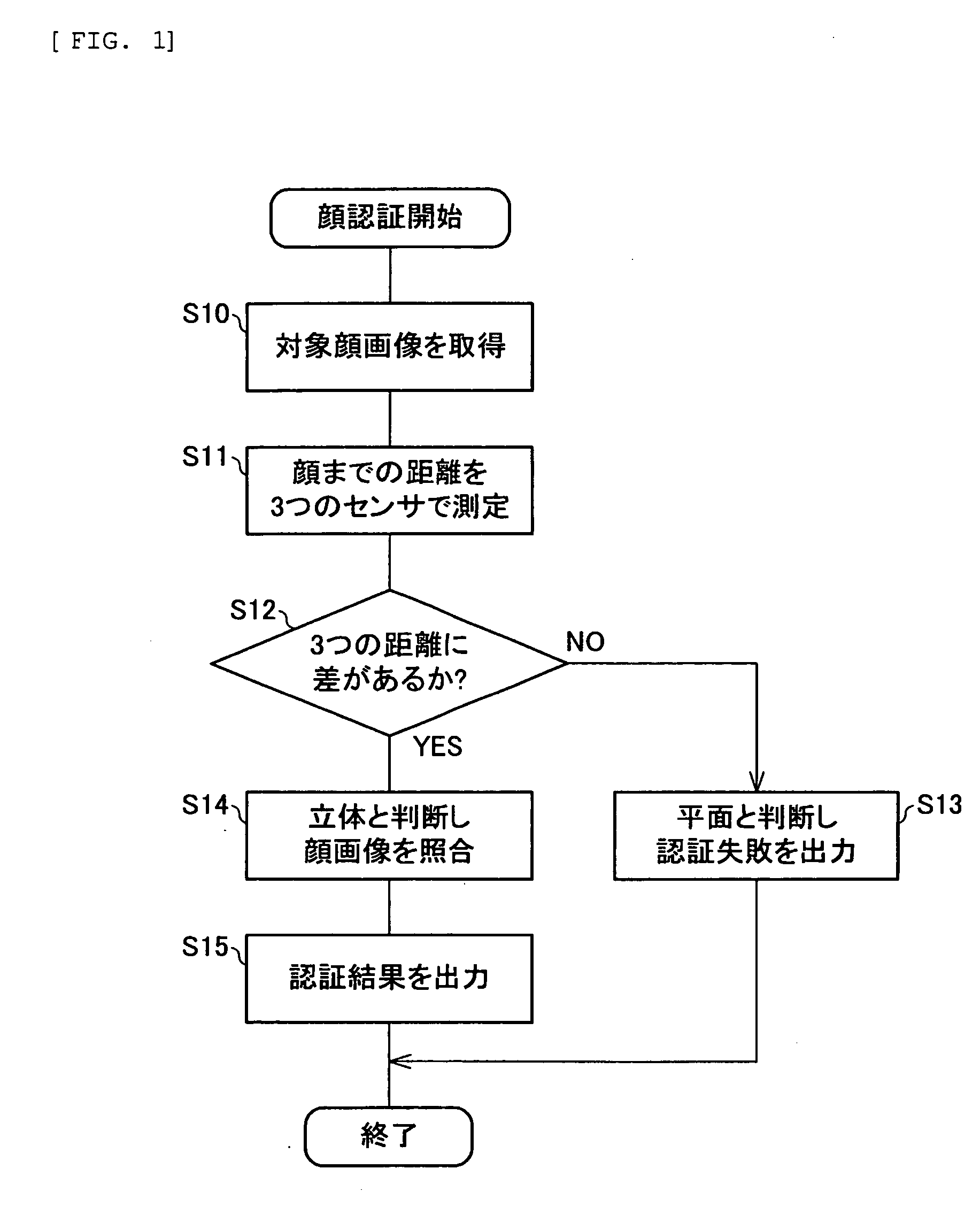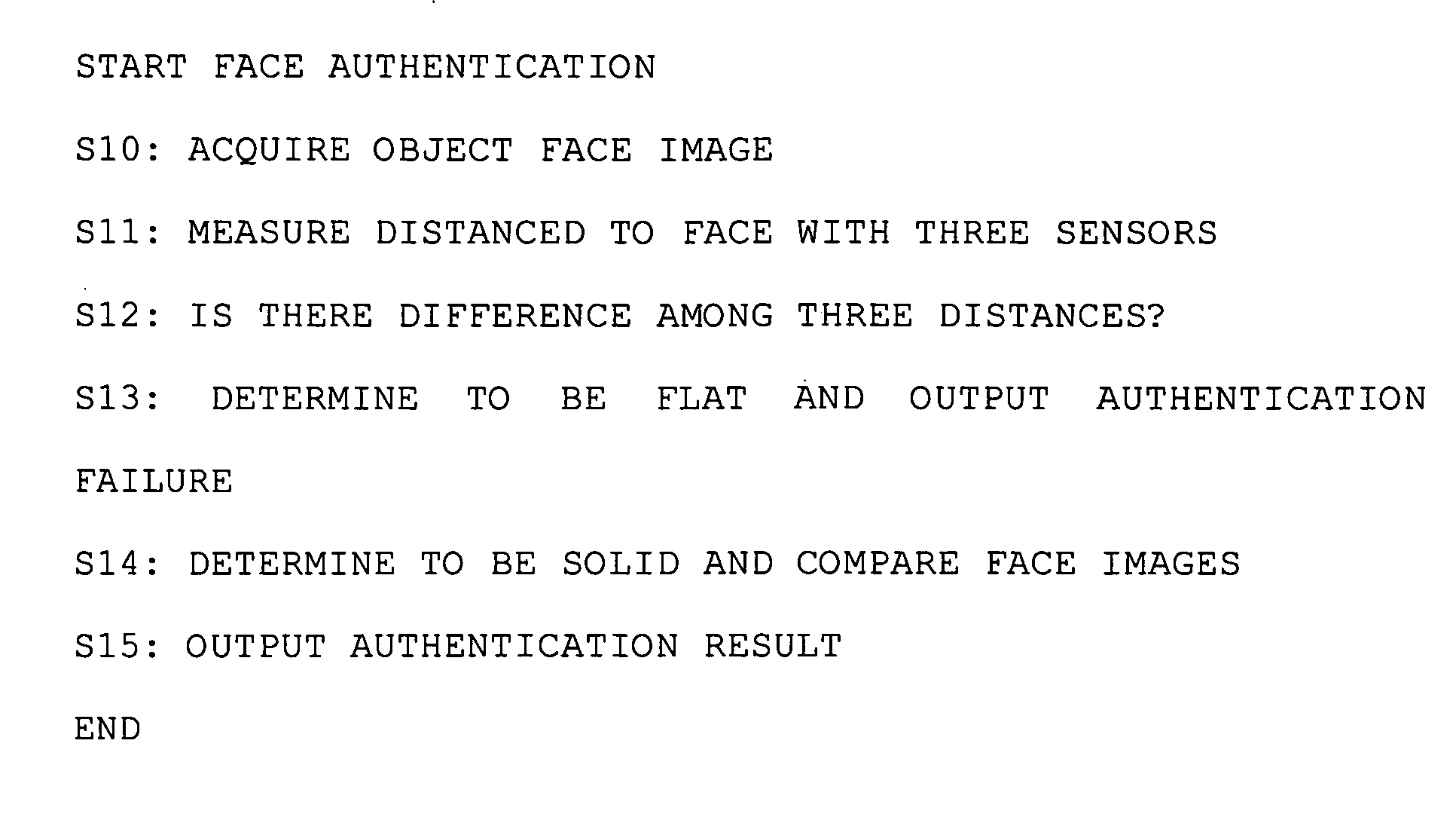Face authentication apparatus, control method and program, electronic device having the same, and program recording medium
- Summary
- Abstract
- Description
- Claims
- Application Information
AI Technical Summary
Benefits of technology
Problems solved by technology
Method used
Image
Examples
first embodiment
[0034] A first embodiment of the invention will be described hereinbelow with reference to FIGS. 1 to 5. FIG. 2 shows the appearance of a mobile phone according to the first embodiment. The mobile phone (electronic device) 10 includes an operating section 11 that receives the operation of a user, a display section 12 that displays various information, and a photograph section 13 that takes a picture of an object including a user on the main surface.
[0035] According to this embodiment, the mobile phone 10 has multiple distance sensors (distance measurement sections) 14 for measuring the distances from an object at positions on the main surface. In the case of FIG. 2, three distance sensors 14a to 14c are disposed in the upper center, center, and lower center of the main surface of the mobile phone 10, respectively.
[0036]FIG. 3 shows the schematic configuration of the mobile phone 10. The mobile phone 10 includes the operating section 11, the display section 12, the photograph secti...
second embodiment
[0058] A second embodiment of the invention will be described hereinbelow with reference to FIGS. 6 and 7. A mobile phone 10 of this embodiment is different from the mobile phone 10 shown in FIGS. 1 to 5 in that it includes one scanning distance sensor 14, in place of the three distance sensors 14a to 14c, and in the method of distance measurement by the distance determination section 32 using the distance sensor 14 and in the method of determination whether an object is solid. The other components and operations are the same. The same components and operations as those of the first embodiment are given the same reference numerals and descriptions thereof will be omitted here.
[0059]FIGS. 7A and 7B show a method of measuring the distances from the distance sensor 14 of the mobile phone 10 to an object's face. FIG. 7A shows a case in which the object is solid. FIG. 7B shows a case in which the object is flat. As illustrated, in this embodiment, the distance determination section 32 i...
PUM
 Login to View More
Login to View More Abstract
Description
Claims
Application Information
 Login to View More
Login to View More - R&D
- Intellectual Property
- Life Sciences
- Materials
- Tech Scout
- Unparalleled Data Quality
- Higher Quality Content
- 60% Fewer Hallucinations
Browse by: Latest US Patents, China's latest patents, Technical Efficacy Thesaurus, Application Domain, Technology Topic, Popular Technical Reports.
© 2025 PatSnap. All rights reserved.Legal|Privacy policy|Modern Slavery Act Transparency Statement|Sitemap|About US| Contact US: help@patsnap.com



